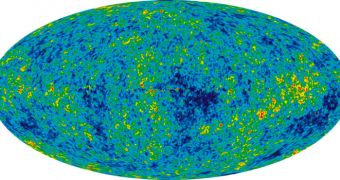Some time ago, a group of researchers proposed that we may be living in a three-dimensional projection of a bi-dimensional space. The hologram Universe theory rallied a number of adepts, but a new research is proving that some of its most basic tenants are flawed.
Astrophysicist Craig Hogan first proposed that the Universe is in fact a hologram in October 2010, when he published the result of a scientific study he conducted using data collected by the GEO600 gravitational wave experiment.
This research was meant to collect data on the quantum fuzziness of the Universe. The expert used two atomic clocks to conduct measurements that would reveal the existence of hypothesized Planck units.
These are fundamental divisions that all basic properties of the Cosmos have. In other words, they are the smallest possible chunks of space, mass and time, among other universal characteristics. The expert interpreted his results as demonstrating the Universe to be a hologram.
But the results of the latest study conducted in this field are contradicting the data obtained from the GEO600 experiment. The latest measurements were conducted using the European Space Agency's (ESA) INTErnational Gamma-Ray Astrophysics Laboratory (INTEGRAL) telescope.
What the instrument indicates is that the pixellation of spacetime – if it exists at all – is in fact a lot smaller than experts originally calculated. The observatory is making reconciling the two leading theories on the nature of space and time even more difficult than it already is.
The nature of space proposed by Albert Einstein's Theory of General Relativity has thus far proven incompatible with the one proposed by quantum theory. The latter holds that, at the smallest levels, space is in fact made of tiny grains, like sand on a beach.
If the quantum theory was true, then INTEGRAL should have discovered the size of these grains, by analyzing the difference in polarization between high-energy and low-energy gamma rays. The telescope is the most sensitive gamma-ray detector every built.
Quantum theory proposes a scale of 10-35 meters for the smallest grains, considering that a millimeter is 10-3 meters. But INTEGRAL data are showing that quantum graininess must be at a level of 10-48 meters or smaller, Wired report.
As such, it is now becoming increasingly clear that the Universe is in fact not a hologram. In any case, experts say that the idea had some merit to it, and that many more scientists may have switched over if the INTEGRAL data would have supported the pixellation hypothesis.

 14 DAY TRIAL //
14 DAY TRIAL //